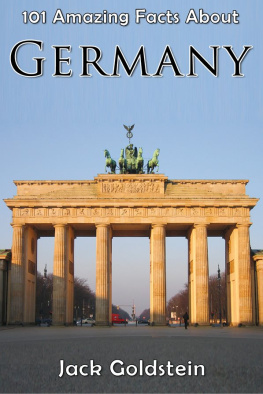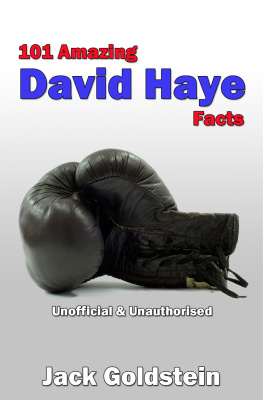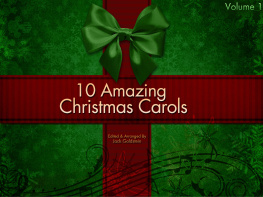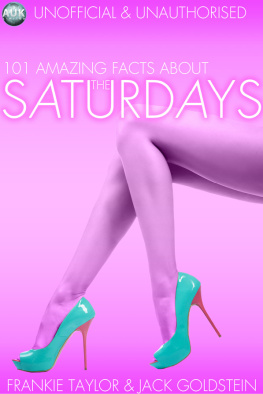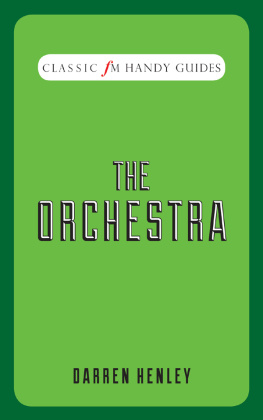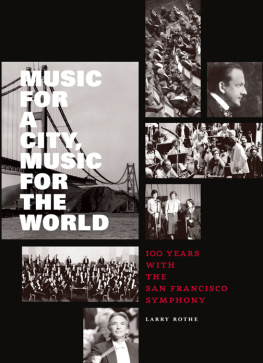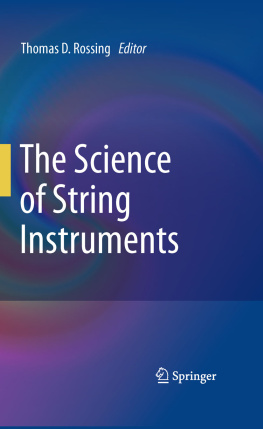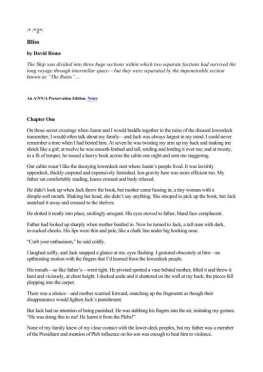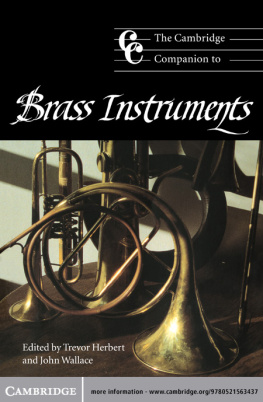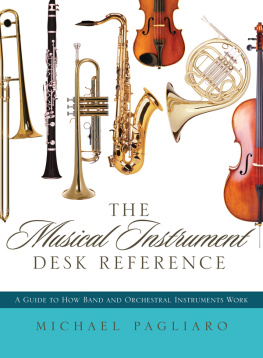Title Page
101 Amazing Facts about The Orchestra
Jack Goldstein
Publisher Information
Published in 2016 by
AUK Authors, an imprint of
Andrews UK Limited
www.andrewsuk.com
The right of Jack Goldstein to be identified as the author of this work has been asserted in accordance with the Copyright, Designs and Patents Act 1998
Copyright 2016 Jack Goldstein
All rights reserved. No part of this publication may be reproduced, stored in a retrieval system, or transmitted, in any form or by any means without the prior written permission of the publisher, nor be otherwise circulated in any form of binding or cover other than that in which it is published and without a similar condition being imposed on the subsequent purchaser. Any person who does so may be liable to criminal prosecution and civil claims for damages.
All facts presented in this title were gained from common and reputable sources in print and on the internet. If any detail within this title is found to be incorrect, the author will be happy to correct it for future editions
Introduction
What is special about the double bass compared to all other string instruments? What is the difference between a xylophone and a glockenspiel? How long is the tubing that makes up a trumpet? And what is the name of the worlds oldest surviving violin? All of these questions and more are answered in this introductory guide to the instruments featured in the modern symphony orchestra. With sections covering strings, brass, woodwind, percussion and keyboard instruments, as well as additional information about the history and structure of the orchestra, this is a fascinating book for children and adults alike.
Follow Jack Goldstein on Twitter @GoldsteinBooks
Visit Goldstein Books at www.jackgoldsteinbooks.com
The Orchestra
- An orchestra is a large collection of instruments (and their players) used in classical music.
- As time has progressed, although there have been minor changes and additions to the instruments used, the basic structure of an orchestra is mostly the same as it has been for hundreds of years.
- A full-size orchestra will generally consist of some eighty to one hundred musicians and is often called a symphony or philharmonic orchestra. This is in contrast to the smaller chamber orchestra which has no more than fifty players.
- The orchestra is split up into various sections, the main ones being the strings, brass, woodwind and percussion . A fairly common fifth section is called the keyboard section, in which a piano, organ or even harp can be found.
- The exact setup of an orchestra will vary depending on the composition being played. Some composers (such as Wagner) featured instruments that they specifically designed (or at least modified - in his case the Wager Tuba) and in 20 th century works one can often find electronic instruments and some even stranger devices - more of which will be revealed later on in this book!
- An orchestra is led by a conductor. This person directs the performance of the musicians with visual gestures, controlling the tempo (speed) of the music as well as the sound mixture - for instance indicating for a section to increase or decrease their playing volume.
- A wide repertoire of music is played by orchestras, including overtures, concertos and symphonies as well as music written for ballets and opera performances.
- In many circumstances, a choir or individual vocalists will perform with an orchestra.
- It is commonly believed that the collection of instruments of which an orchestra is comprised were standardised around the classical period in music history - from around 1750 to the 1820s.
- It was in the early 19 th century that Ludwig van Beethoven was composing pieces for orchestra, and certain facets of the modern orchestra - such as having double wind and brass sections as standard - are generally attributed to his influence; almost without exception he included paired instruments within these sections.

A Conductors Baton
Strings - Part 1
- Violin - The violin is the smallest (and therefore highest-pitched) stringed instrument that is regularly used. A violin has four strings, each one tuned a perfect fifth above the last (G, D, A and E). The body (not including the neck) is usually 35.6 centimetres long, although some of the earliest built examples were slightly smaller.
- The violin is normally played by either drawing a bow over the strings, or alternatively plucking notes. The term for the former is arco , whilst the latter is known as pizzicato .
- The earliest examples of the violin date back to 16 th century Italy, and the nature of the instruments has changed very little since then - although one can nowadays buy electric violins which have a very different type of sound. Perhaps the most important invention that is comparatively recent is the chinrest , invented in the early 19 th century - meaning that violins were played for almost two hundred years without them! The chinrest essentially gives additional stability to the instrument, meaning control and balance is not lost when shifting fingering positions.
- In a modern orchestra, there are two sections of violins, known as first violins and second violins. The former section usually consists of sixteen individuals and the latter fourteen. The principal first violin is also known as the leader (or in some countries the concertmaster ) and is not only the head of the string section but also second-in-command (behind the conductor) of the entire orchestra.
- Viola - The viola is the middle voice of the string section. It looks very similar to the violin, but with a larger size - 40 centimetres compared to 35.6 centimetres. This gives the instrument a pitch range one fifth lower than the violin, meaning its open strings are C, D, G and A. There is usually just one viola section consisting of twelve instruments.
- One interesting thing about the viola is that music is written for it in the alto clef, very rarely used elsewhere (the most common being the treble and bass clefs). However, when there are long sections to be played in the instruments higher register, these are often notated in the treble clef to make it easier for the performer to read.
- As with everything about an orchestra, there are variations to the rules above. For instance, larger violas have been made, with a 48 centimetres long version being constructed for use in Wagners operas. Additionally, even classical era composers bent the rules - Mozart himself specified in one piece ( Sinfonia Concertante for Violin, Viola and Orchestra in E flat ) that the solo violas strings were to be tuned a semitone higher than normal (and wrote the music in a correspondingly semitone lower key). Academics believe this was to give that particular instrument a slightly brighter tone then normal so it could be clearly heard among the other instruments used.
- The bow of the viola is wider and heavier than that of the violin. Whilst the latter is most often somewhere between 58 and 61 grams, the former usually weighs in between 70 and 74.
- A bow is held around a part known as a frog or heel ; this part can be finely adjusted by a screw, which moves it a tiny amount up or down the bow, resulting in a change of tension in the bows hairs. This allows the player to get the exact tension required for perfect playing. The hairs of a bow are regularly coated with something known as rosin (a solid form of a resin obtained from conifer trees) which - when the hair is at the optimum tension - provides the perfect amount of friction to generate a stable wave in the string.
Next page

